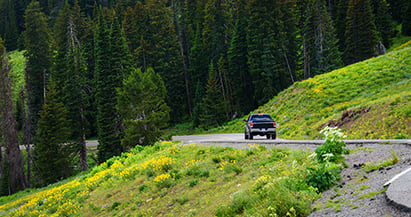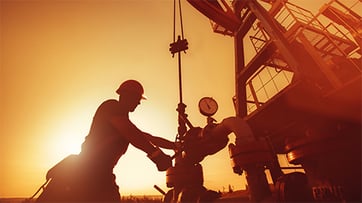Blackline Safety is a technology leader driving innovation in the industrial workforce through IoT (Internet of Things). With connected safety devices and predictive analytics, Blackline enables companies to drive towards zero safety incidents and improved operational performance. Blackline provides wearable devices, personal and area gas monitoring, cloud-connected software and data analytics to meet demanding safety challenges and enhance overall productivity for organizations with coverage in more than 100 countries. Armed with cellular and satellite connectivity, Blackline provides a lifeline to tens of thousands of people, having reported over 200 billion data-points and initiated over seven million emergency alerts. For more information, visit BlacklineSafety.com and connect with us on Facebook, Twitter, LinkedIn and Instagram.
Lone Worker Solutions Save Lives
Blackline Safety, Leader in Connected Gas Detection & Lone Worker Safety
June 03, 2022
 Read four case studies on how Blackline’s connected safety solutions have ensured the safety of workers out of sight and sound—from snowmobilers to viaduct workers to night drivers.
Read four case studies on how Blackline’s connected safety solutions have ensured the safety of workers out of sight and sound—from snowmobilers to viaduct workers to night drivers.
Approximately 15-20% of the workforce are lone workers. And of those, 44% felt unsafe while at work with almost 20% struggled to get help after an incident. (EHS Today)
A variety of industries face the challenge of protecting lone workers from hazardous situations. The multitude of potential risks, such as environmental hazards, vehicle accidents, slips, trips and falls, health incidents, and hazardous gas exposure, make it crucial that every lone worker’s safety is accounted for.
The variety of circumstances that define working alone might surprise you; in addition to those working remotely, people that cannot maintain both vocal and visual communication with anyone else are also considered lone workers.
Only 17% of lone workers report having access to a system to check-in themselves. (EHS Today)
Check out four new case studies of how organizations are rising to the challenge to protect lone workers using our connected safety technology. You’ll discover:
| Ways a snowmobile association in British Columbia, Canada protects its volunteers grooming trails alone at night in the remote backcountry – Breakdown in the Backcountry |  |
|
| How a multinational wholesale distributor averted a warehouse worker’s near-fatal heart attack – Automated Alerts Saves Lives |  |
|
|
Strategies a UK construction company used to locate employees outside cellular range working inside a viaduct – Reaching the Unreachable |
 |
|
| Ways a global cement company fortified its night driver safety – Safe Travels | 
|
 Blackline Safety’s G7 wearables provide organizations with a connected safety solution to accomplish that. Fall detection, no motion alerts, missed check-in notifications, an SOS latch and two-way communications help ensure your lone workers are protected. And with either cellular or satellite connectivity, their safety is always being monitored, no matter how isolated they might be.
Blackline Safety’s G7 wearables provide organizations with a connected safety solution to accomplish that. Fall detection, no motion alerts, missed check-in notifications, an SOS latch and two-way communications help ensure your lone workers are protected. And with either cellular or satellite connectivity, their safety is always being monitored, no matter how isolated they might be.
Get In Touch
Let’s start a discussion about your safety challenges and needs.
Related Blog Posts
Real-Life Incident: Mason’s Story — High H2S Exposure
November 25, 2025
“Shortness of breath. Request EMS to the location.” How Real-Time Gas Detection Led to a Quick Save Exposure to toxic gases can go from a strange...
Real-Life Incident: Gerry’s Story: Alone in the Boiler Room With CO
October 21, 2025
When a routine patrol became a potential gas poisoning tragedy, quick action and life-saving technology made all the difference. It was a routine...
Real-Life Incident: Brian’s Story - Containing a Texas Brush Fire
August 26, 2025
How quick action stopped a blaze from spreading, safeguarding nearby neighborhoods In a farming community in rural Texas with a population fewer...



